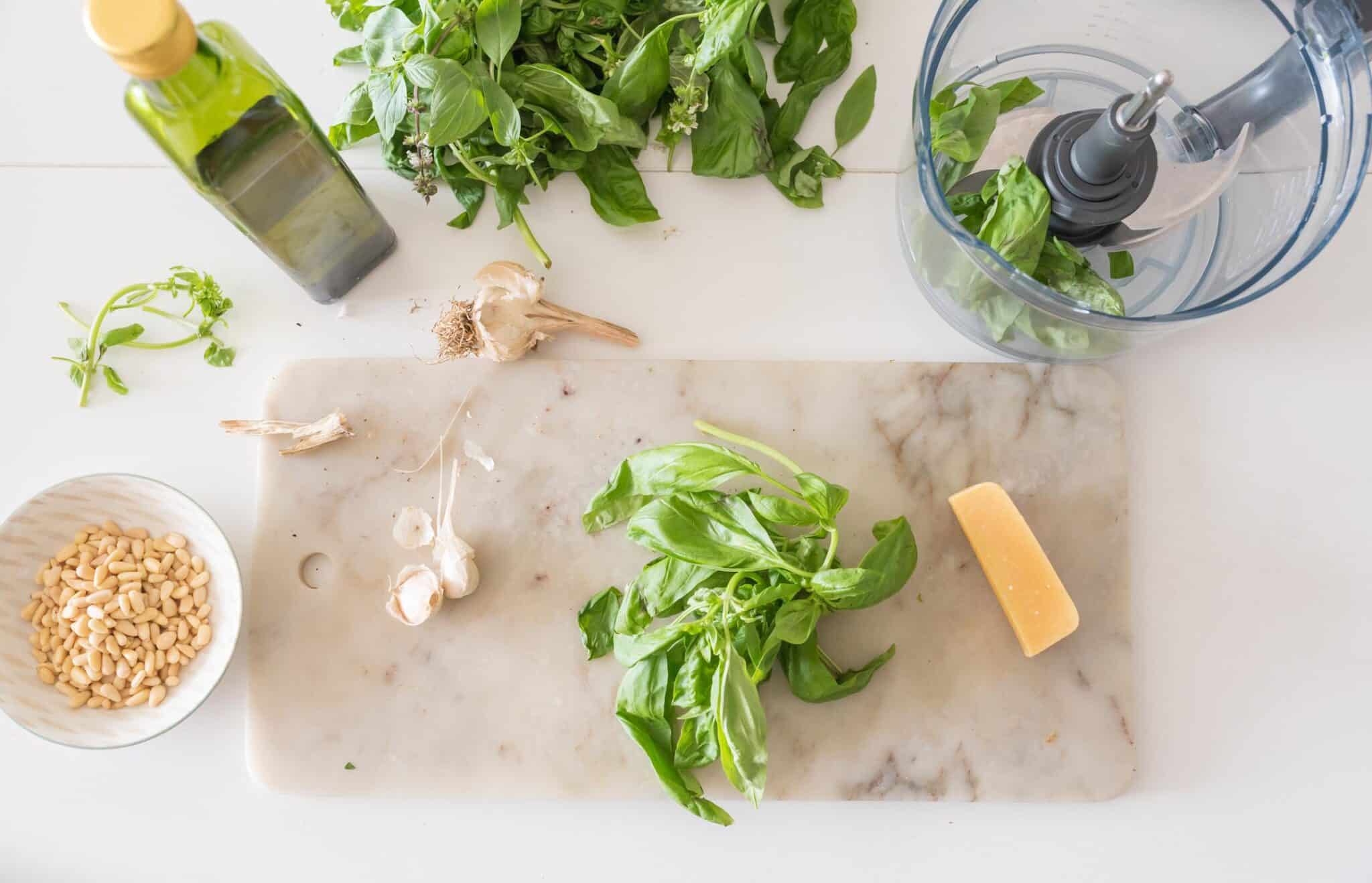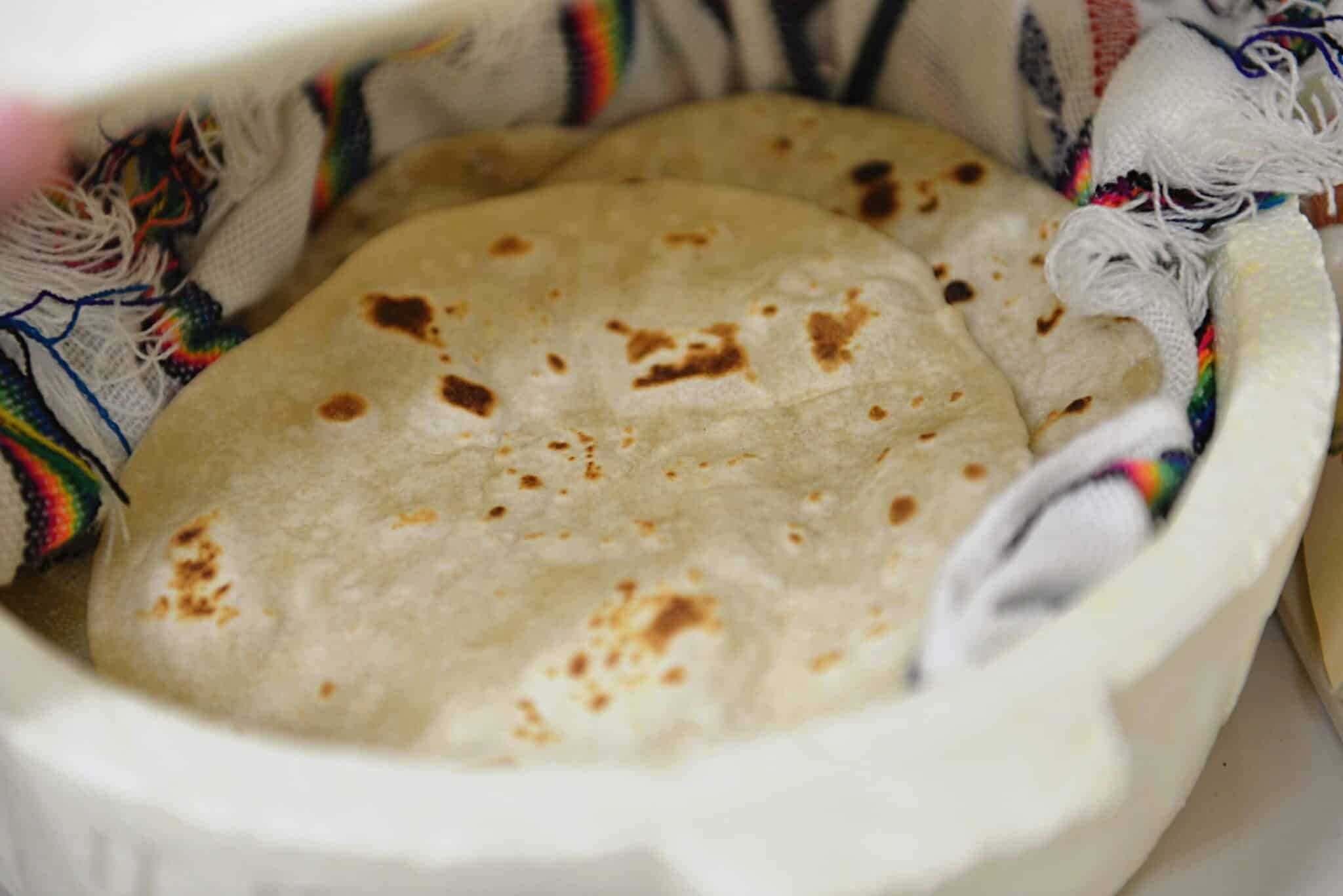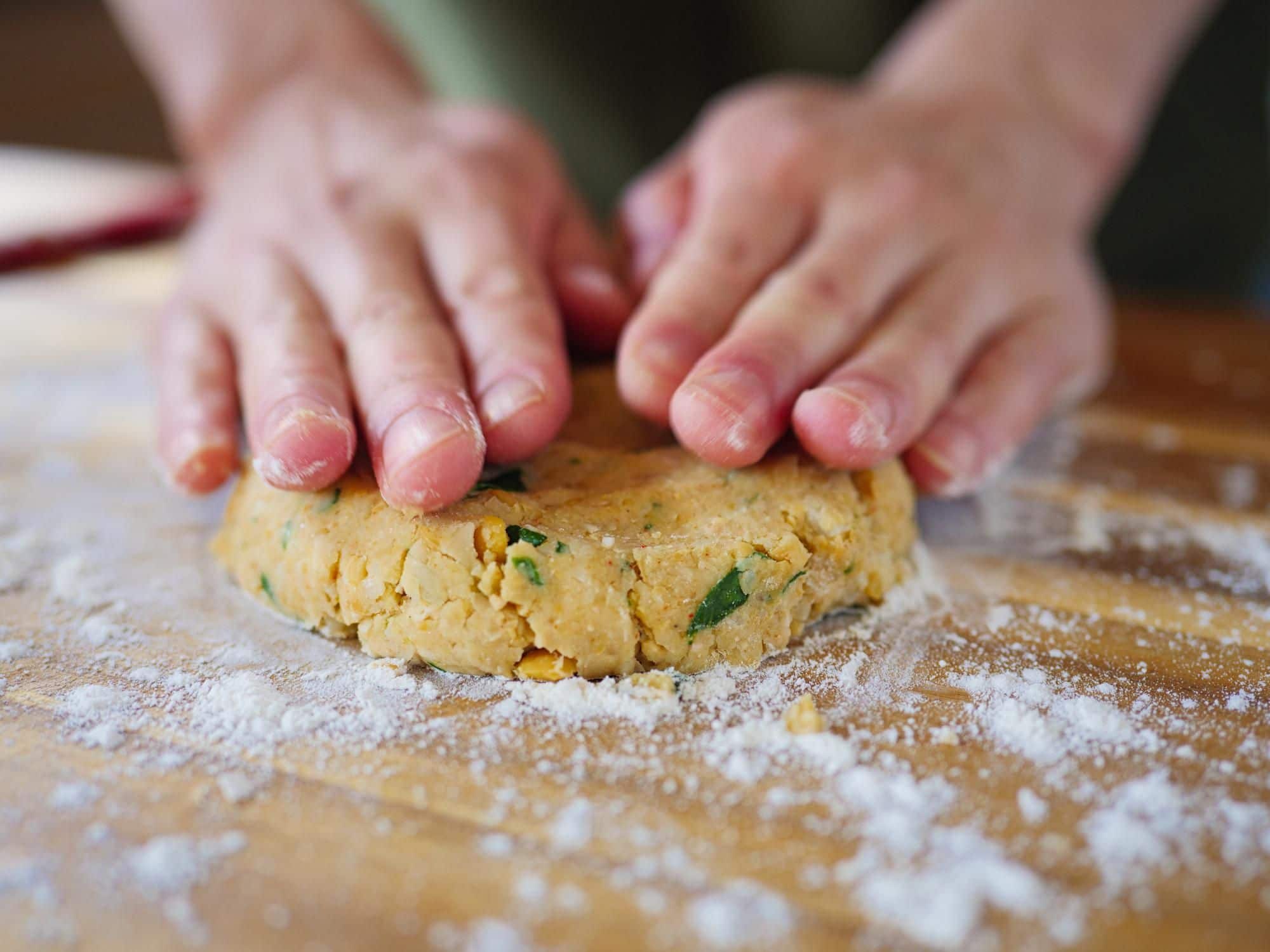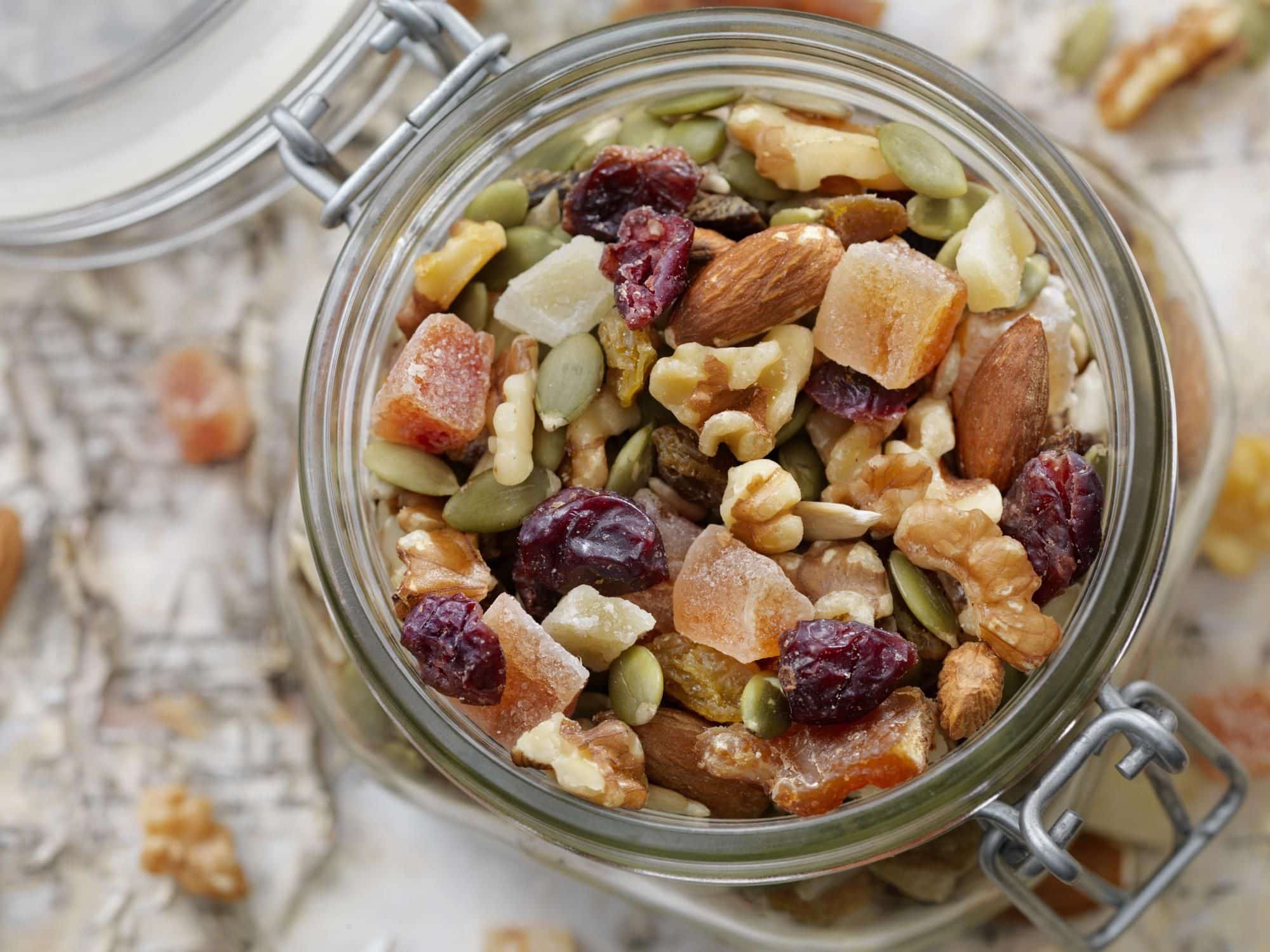Cut Down on Plastic By Making These 10 Kitchen Staples From Scratch

 Why you can trust us
Why you can trust us
Founded in 2005 as an Ohio-based environmental newspaper, EcoWatch is a digital platform dedicated to publishing quality, science-based content on environmental issues, causes, and solutions.
Of all plastic produced, only 9% ever gets recycled, according to National Geographic, and 8 million metric tons make their way into oceans every year, much of which is single-use plastic.
Cutting down on single-use plastics in your life might mean bringing your own reusable straw on a coffee run, swapping plastic bags for reusable totes, or ditching disposable water bottles; but, it’s time to take it a step further and address the waste we accumulate through our grocery choices.
Making foods from scratch is often a much more sustainable option, and more time-intensive recipes can replace practically every processed or packaged food in your cabinets.
Here are a few of the most basic kitchen staples you can easily, quickly make yourself to cut down on plastic packaging in the kitchen.
1. Flour Tortillas

Wanwisa Hernandez / EyeEm / Getty Images
Store-bought flour tortillas come in plastic bags, and are often laden with preservatives. Luckily, this simple recipe will get fresher, tastier, waste-free tortillas on the table in under thirty minutes.
Combine 2 cups of flour with ½ teaspoon of salt, then stir in 3 tablespoons of olive oil and ¾ cup of water. Turn the mixture onto a floured surface and knead 10-12 times until the dough comes together and has a smooth consistency, adding additional flour or water as needed. Divide the dough into 8 equal pieces (rolling the dough into a log and cutting into halves three times makes dividing equally easier). Roll out each of these pieces on the floured surface into a roughly 7-inch circle. Grease a skillet and cook the tortillas for one minute on each side over medium heat; air pockets will form and the dough will begin to brown. Serve immediately, or wrap in a tea towel to keep warm will cooking the remainder.
For a healthier option, try these whole wheat flour tortillas, which are just as easy to make for a last-minute meal.
2. Bread (and Bread Crumbs)
There are many recipes for easy bread to choose from, but this Foolproof Bread from @fitgreenmind is a keeper and an excellent place to start.
Start by mixing 1 ½ cups warm water with 2 teaspoons of instant yeast. Add 3 cups flour (or 1 ½ if you’d rather use whole wheat) and 1 teaspoon of salt, then mix with a spatula. Cover the dough in a bowl with a tea towel and let rest for 2-3 hours. Turn the dough out onto a floured surface, dust with a bit more flour, then fold in the sides. Transfer to parchment paper and reshape a bit, then place the paper with the dough in a preheated pot (30 minutes in the oven at 450ºF). Bake for 30 minutes covered, then 15 minutes uncovered at 450ºF.
Making your own breadcrumbs is even easier, eliminates the need for those big plastic bags they often come in, and offers a second life to stale bread. Either add chunks of bread slowly to a food processor, or smash dry bread in a plastic bag with a rolling pin. The bread crumbs can be toasted in the oven or a toaster oven if the recipe calls for it.
3. Herbal Tea

Richard Drury / DigitalVision / Getty Images
Not only does making homemade herbal teas save on packaging, but you’re able to create your own blends with your favorite ingredients and avoid the expensive store-bought varieties. Grow and dry your own herbs and flowers, or purchase fresh or dried ingredients from a grocery store or farmers market.
Most herbal teas follow a basic structure: a base (3 parts), compliment (1-2 parts), and an accent (1/2-1 parts); follow a recipe, or create your own blends using your preferred flavors.
For zero-waste brewing – avoiding the single-use teabags that often contain microplastics, which in turn release into your hot beverage – use linen tea bags or infusion baskets to fill and steep in the hot water.
4. Frozen Fruit and Vegetables
Frozen fruits and vegetables are great to have on hand to make healthy meals; they allow you to shop less frequently, cut down on prep time, and prevent waste from fresh produce that goes bad if not used quickly enough. The packaging, freezing, and transportation of frozen fruits and veggies, does, however, carry an environmental toll. Save both money and plastic by freezing your own fruits and veggies.
First, you’ll need to blanch the vegetables (cook them very quickly in boiling water) to destroy any bacteria, and slow the enzyme action that causes loss of color, flavor, and texture. Wash and sort the vegetables to remove any debris or imperfections, then trim and chop into the size you’d like. Boil water – one gallon per pound of vegetables, or two gallons per pound of leafy greens –add veggies, and cover. You can also choose to steam blanch by suspending a steamer basket in a pot filled with a few inches of water, or use the blancher/strainer that fits directly into some pots. Blanch according to the time required for the vegetable at hand, then transfer using a slotted spoon (or remove the blancher from the boiling water) to a bowl of ice water. Leave them in the bowl for the same amount of time they were blanched, stirring occasionally.
Then, spread the pieces on a cookie sheet so none are touching. Place in the freezer until frozen, then transfer to a freezer bag or reusable container; this step ensures that the vegetables won’t freeze and stick to one another in a large mass, and you can take out only what you need over time. Employ this step with fruit as well, after thoroughly washing, trimming, and sorting – there’s no need to blanch fruit.
You can even create your own blends: if you make a smoothie frequently with the same fruits, or like to roast certain vegetables for a recipe, combine these in a freezer bag for easy cooking.
5. Veggie Burgers

haoliang / E+ / Getty Images
Replacing traditional burgers with veggie burgers is already a great step towards a lower-impact diet. However, most vegetarian meat alternatives still come heavily packaged in plastic.
Making your own veggie burgers can be very simple, and they can be frozen just like their store-bought counterparts. Generally, a burger will taste delicious and hold together when it follows a basic structure of cooked vegetables, legumes, grains, spices, flavor/texture builders, and a dry base. Try one of these plant-based burger recipes, or experiment with ingredients you already have at home:
- Easy Grillable Veggie Burgers
- NYT Cooking’s “The Ultimate Veggie Burger”
- The Perfect Veggie Burger Formula (to use what you already have)
- Best Veggie Burger (with mushrooms)
- Favorite Veggie Burgers (with sweet potatoes, quinoa, and black beans)
6. Salad Dressing
Unfortunately, you can’t assume that your plastic salad dressing bottle will be recycled – even if it’s put in the recycling bin. Luckily, there is most likely a recipe somewhere online for your favorite dressing; have the necessary ingredients on hand to whip up a quick batch when needed.
Make your own simple Italian dressing by mixing olive oil, white wine vinegar, parsley, lemon juice, garlic, and dried basil, oregano, and crushed red pepper. Prepare up to one day ahead of time and store covered in the refrigerator. Some recipes also call for Dijon mustard, maple syrup, honey, or parmesan as well. Ranch dressing is also rather simple to make at home with sour cream, buttermilk, mayonnaise, lemon, and fresh herbs. Of course, many of these ingredients also come packaged in plastic; try to use things you already buy for other purposes in your dressings – like sour cream, mayonnaise, or dried herbs – and look for loose, unpackaged fresh herbs at the grocery store or a farmers market.
7. Vegetable Stock

Pexels
Save clean peels, stalks, stems, tops, and bottoms of vegetables in a container in the freezer over time to make your own vegetable stock. Once the container is full, add the scraps to boiling water and simmer for at least 30 minutes. Strain the liquid to remove scraps and particles (make sure to compost them!), then store the stock in the refrigerator for 4 days or freeze for up to 3 months.
8. Pesto
Pesto is a staple for pasta sauces, sandwich spreads, salad dressings, etc., but often comes in small quantities in disposable containers. To make a basic basil pesto, add ½ cup of toasted pine nuts, 2 tablespoons of lemon juice, garlic, salt, and pepper to a food processor and pulse. Pulse again after adding 2 cups of fresh basil leaves. As the processor runs, add in ¼ cup of olive oil, then (optionally) ¼ cup of parmesan cheese.
The best part about pesto is its versatility; replace half of the basil with a cup of arugula, kale, zucchini, a roasted red pepper, a few artichoke hearts, half an avocado, or half a cup of cooked kale stems (a good way to use these up instead of tossing in the compost). The pine nuts can also be swapped out for other nuts, and honey, maple syrup, red pepper flakes, or nutritional yeast can add to the flavor.
9. Granola
Ditch the plastic bags or cartons and the preservatives by making your own granola. This versatile breakfast/snack is simple to prepare at home, and can be made much healthier without the additional sugar in store-bought granola.
Recipes can be customized based on your favorite flavors or what ingredients you have in the cabinet. A basic rule of thumb is to maintain a 50-50 balance of oil and sweetener to coat the oats. Whisk together your preferred oil with honey or maple syrup, adding cinnamon if you wish. Stir in about 3 cups of oats and any nuts or seeds you’d like. Spread in an even layer on a parchment-paper-lined baking sheet, clumping the oats if you prefer granola clusters to a looser cereal. Bake for 20 minutes at 300ºF, stirring halfway through, and removing when the nuts are toasted and the oats are golden brown. Add any dried fruit if desired, then tamp down (clumping again for granola clusters), and allow to cool. Store the final product in an airtight container and enjoy for up to one month.
10. Snack Packs

LauriPatterson / iStock / Getty Images Plus
For kids’ lunches or snacks on-the-go, make your own snack packs to avoid the waste of single-serving store-bought snacks. Buy your favorite snacks in bulk – crackers, pretzels, nuts, dried fruit, cheese crackers, etc. – and package them yourself in reusable, sealable bags or small Tupperware containers. You can even make your own trail mix by buying nuts, dried fruit, and chocolate candies in large quantities and mixing it according to your preferred ratio. Keep these in the cabinet to easily grab for a snack.
Linnea graduated from Skidmore College in 2019 with a Bachelor’s degree in English and Environmental Studies, and now lives in Brooklyn, New York. Most recently, Linnea worked at Hunger Free America, and has interned with WHYY in Philadelphia, Saratoga Living Magazine, and the Sierra Club in Washington, DC.
Linnea enjoys hiking and spending time outdoors, reading, practicing her German, and volunteering on farms and gardens and for environmental justice efforts in her community. Along with journalism, she is also an essayist and writer of creative nonfiction.
Subscribe to get exclusive updates in our daily newsletter!
By signing up, you agree to the Terms of Use and Privacy Policy & to receive electronic communications from EcoWatch Media Group, which may include marketing promotions, advertisements and sponsored content.

 233k
233k  41k
41k  Subscribe
Subscribe 



